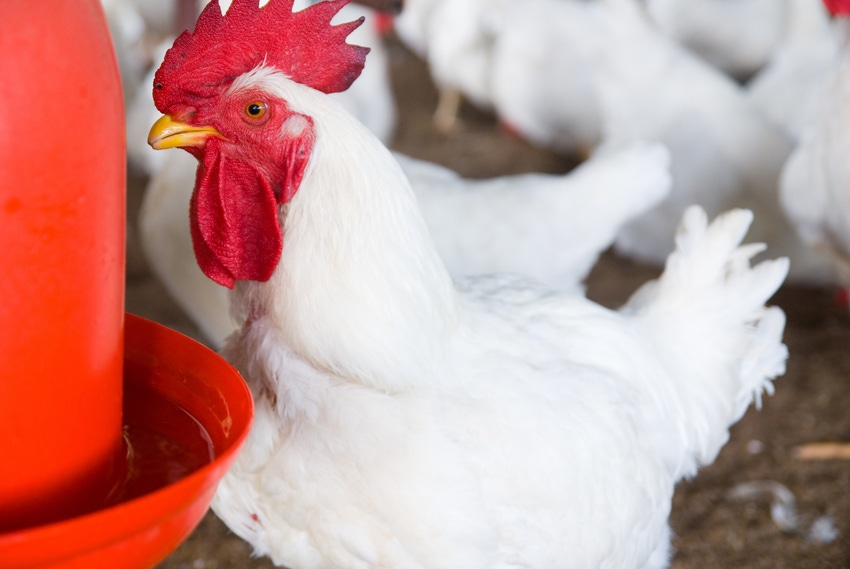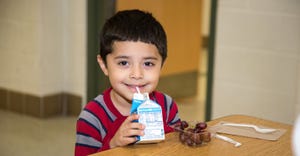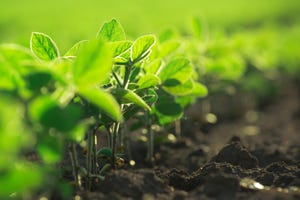Ambitious, $10m grant to transform poultry nutrition, water use
Poultry science research grant, co-led by University of Arkansas and Cornell, is among largest ever awarded by USDA.
September 27, 2019

The University of Arkansas and Cornell University will co-lead an "ambitious and wide-ranging," $9.95 million, multi-university grant that seeks to enhance poultry nutrition and well-being as well as improve the industry's water use and better prepare college students for industry careers, according to an announcement from the University of Arkansas.
The grant, “Empowering U.S. Broiler Production for Transformation & Sustainability,” was awarded by the U.S. Department of Agriculture's National Institute of Food & Agriculture. It’s one of the largest grants ever made by USDA, the university said.
The Arkansas side of the grant involves poultry science faculty from the University of Arkansas System Division of Agriculture and its research and extension arms and the teaching faculty of the Dale Bumpers College of Agricultural, Food & Life Sciences, part of the University of Arkansas at Fayetteville, Ark. Arkansas is home to the John Tyson Center of Excellence for Poultry Science, which opened in 1992 to provide support for the state’s nearly $4 billion poultry industry.
“This is an enormously important project for the poultry industry, and especially for Arkansas, where the poultry industry is so important to our economy,” said Mark Cochran, University of Arkansas System vice president-agriculture. “This project draws on the strengths of all the participating institutions in a way that we believe will be transformative in the industry. This does not just attack one challenge; it provides a 360-degree, comprehensive approach.
“Our center of excellence is strategically positioned for the breadth of this kind of effort that will connect research from genetics, both in poultry and microbes, production practices, poultry nutrition and health, product development and processing, as well as the human health-promoting characteristics of the consumer and protein product,” he said.
Cornell is the other major partner on the grant, which also includes faculty from the University of Arkansas-Pine Bluff (UAPB), Mississippi State University and Iowa State University.
“Arkansas’ Center for Excellence in Poultry Science is arguably the best place in the country to do poultry biology,” said poultry science professor Walter Bottje, co-principal investigator for the grant. “Partnering with Cornell’s Dr. Xingen Lei, co-project director, brought together a perfect mix of expertise for this project. We’ve all been working on innovations, and through this grant, we can bring all of those together in ways that haven’t been attempted before. We are hopeful that some of what we do will have global implications.”
Nutrition/water consumption
Bottje said researchers at Arkansas will investigate water efficiency from genetic and dietary studies as well as heat tolerance and water use and its effects on the poultry microbiome.
One example of his is to investigate ways to reduce the amounts of non-digestible material in the diet that can disrupt the microbial environment in the bird’s hindgut and lead to a number of bird health and management issues, the announcement said.
Poultry house water use
Water is an essential factor in keeping poultry houses cool enough for birds to thrive and grow. One of the most widely used means for cooling poultry houses is an evaporative system that uses vertical pads through which water passes, the university said. Large fans at the end of the poultry house pull air through the pads, making the air more humid to provide evaporative cooling.
However, a misting system that sprays water droplets directly into the air in the house, followed by turning on the fans, provides convective cooling. Convective cooling uses 60-70% of the water that evaporative systems do.
The grant project will fund extension outreach to encourage adoption of the more water-efficient method, the university said.
Microalgae, feathers
Bottje said researchers at Cornell and Arkansas will also examine the potential for microalgae as an animal feed, its potential to convert poultry litter into biofuels and vegetable oil as well as its ability to produce other valuable products such as omega-3 fatty acids, antioxidants, vitamin D and enzymes such as phytase and keratinase, which can break down feathers, freeing up a protein that’s digestible.
Education
“We are very interested in developing the next generation of farmers, professionals and leaders for the poultry industry,” Bottje said. To do that, the grant effort will:
Develop a summer student internship program to integrate research and promote collaboration among the members of the grant consortium;
Develop a "Masters in Professional Studies in Sustainable Agriculture Systems" based on a course of study already in place at Cornell;
Create additional opportunities for minority students in poultry industry careers, including a course through UAPB, Arkansas State University and Oklahoma State University that will also include a year’s coursework in Fayetteville, and
Foster development of an masters of science research program at UAPB.
Extension
All of the findings from the grant will be transferred to the poultry industry and the public through extension work, including workshops, national meetings, poultry veterinarian meetings, poultry short courses, displays at state and county fairs, 4-H meetings and various digital communications that include a newsletter and social media.
You May Also Like



